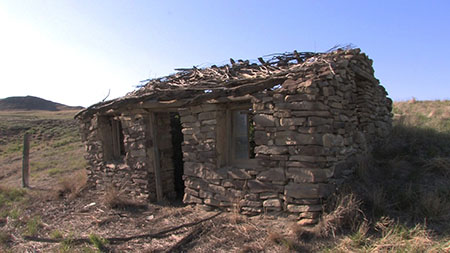Subsistance Farming

The Hutmacher Chicken Coop
Prior to the 1940s, horses were the power that drove the farm. They plowed the fields, moved whatever needed to be moved and provided transportation for the family.
There was no electricity and water had to be carried by hand in buckets. Wood, coal or buffalo “chips” needed to be harvested manually for heating and cooking fuel. Almost every task needed to make a farm successful was labor intensive and this limited the practical size of a farm.
It wasn’t until after World War II, with the wide availability of internal combustion tractors, that larger cash crop farms became practical and small family farms like the Hutmacher farmstead began to disappear.
Successful homestead farms were self-sufficient, producing enough food to feed the family. This is also known as subsistence farming. These homestead farms consisted of a combination of crops and livestock necessary to meet the needs of the family.
Sales from crops and milk and eggs brought in cash to purchase staples like sugar, coffee, kerosene, bolts of cloth, needles and thread and medicine, as well as hardware like tools, nails, screws and wire.
Professional services from physicians, blacksmiths and veterinarians were generally obtained by bartering rather than spending limited cash resources.
Subsistance Farming

